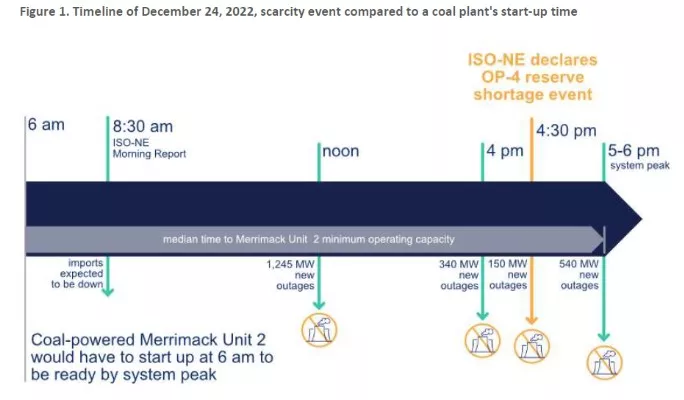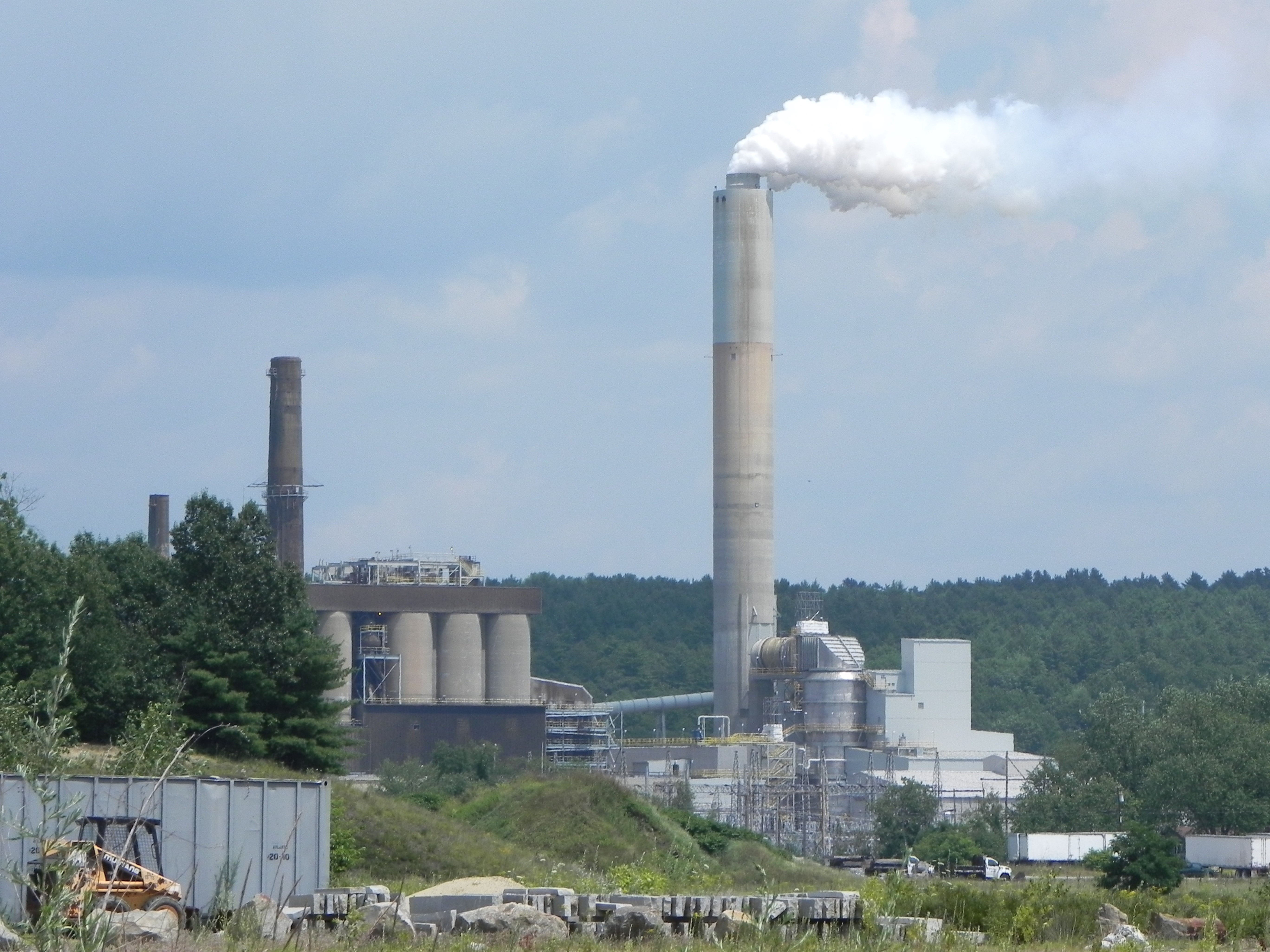ISO New England is overhauling its rules for determining how much different generation resources contribute to the reliability of the region’s electric grid. One of the issues it is addressing is long overdue—the challenges that many gas generators face in getting fuel during severe winter storm events. However, the process is neglecting another critically important facet of capacity accreditation: how quickly a generator can start producing power when it’s needed by the grid operator. During Winter Storm Elliott, the New England grid faced emergency conditions in part because over eight gigawatts of capacity was unable to start up in time to meet demand. That’s equivalent to four times the maximum output of New England’s largest generator, the Millstone nuclear plant in Connecticut.
Experts at Synapse Energy Economics have published a report highlighting the risks that these inflexible and slow start-up units pose for reliability. The times when the New England grid has come closest to blackouts in recent years all arose from rapidly developing emergencies, such as unexpected spikes in the amount of consumer demand, or high rates of generator forced outages (e.g., when plants trip offline due to mechanical failures). A generator that takes 12 or more hours to start up is nearly useless for responding in these circumstances, like a sprinter who hasn’t yet put on their shoes when the starting gun goes off.
A prime example is the Merrimack coal plant in New Hampshire, which Synapse found takes 12-14 hours to start up, on average. As shown below, this means the plant would have had to have started up at 6am on Christmas Eve 2022, in order to be producing power by the peak hour of system emergency at 6pm that day. Under normal conditions this might be fine, the problem is that the need for Merrimack wouldn’t have become evident until the middle of the day when over two gigawatts of mechanical failure and other problems arose with less expensive generators that were online. The following figure, reproduced from Synapse’s report, shows the start up time of Merrimack Unit 2 against the timeline of events of that Christmas Eve, and the inability of a slow start unit to contribute to reliability when a grid emergency materializes quickly.

Grid emergencies arise not only from forced outages, but also from errors in forecasting consumer demand and renewable energy output. Synapse found that on the worst 10 percent of days, ISO-NE under-forecasts demand by about 1,200 megawatts (MW). And while wind energy forecasting is generally accurate, under-forecasts of 200-400 MWs can occur. This level of forecast uncertainty requires response from resources with less than 12-14 hours of start up time. As climate change increases the severity and frequency of extreme weather events, this forecast uncertainty will only become more important.
The capacity market is the primary tool ISO-NE employs to ensure adequate supply resources are available to meet consumer demand. Through that market, ISO-NE pays generators to be available to generate power during a commitment period several years in the future. The amount of capacity that any particular supply resource (which includes demand response) can sell into that market depends on how likely the resource is to be available at times when the grid is stressed.
Currently, ISO-NE approach doesn’t factor resource inflexibility to its assessment of whether a unit would be available. Instead the underlying model just assumes a unit can be instantly available even though everyone knows that isn’t true. As a result, units like those at Merrimack are overvalued in the capacity market and consumers are paying Merrimack and other inflexible units to be available during capacity crunches based on a fiction. Instead, ISO-NE’s market rules should decrease the amount of capacity that inflexible units can sell based on their slow start up times. This would improve reliability and ensure that the money consumers pay for capacity
Long start-up times and other aspects of inflexibility like ramp rates and minimum downtimes are not only a reliability problem in New England. PJM Interconnection–the grid operator for the mid-Atlantic region–also faced a very tight reliability situation during Winter Storm Elliott, in part due to 3,000 MW of generation that was unable to respond during that event due to long lead times. The grid operator for 14 Midwest states – the Midcontinent Independent System Operator – recently took a small step towards addressing this situation, when it updated its capacity market rules to reduce the value of resources with start up times of more than 24 hours.
It is imperative that ISO-NE update its resource adequacy model and capacity market rules to address this significant short-coming. The ISO New England market monitor has been raising flags about the problems caused by slow-start units for years. Incorporating operational limitations into the capacity accreditation framework will require more sophisticated modeling tools and will take some time, so ISO New England needs to initiate this process as soon as possible. Otherwise consumers will continue to pay for capacity that is stuck on the sidelines when it matters most.
